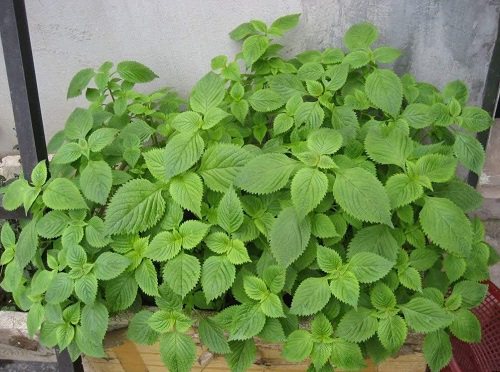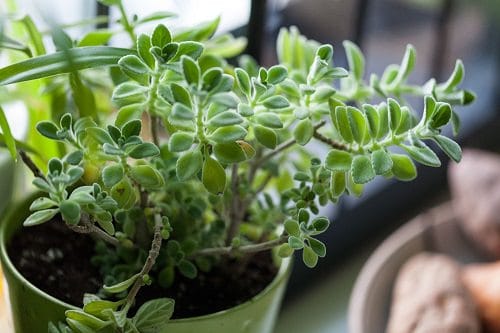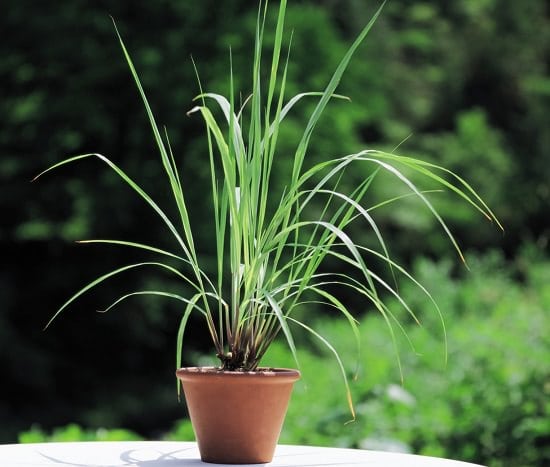Add flavor to your cuisines with the Most Exotic Herbs from different countries and origins with distinct flavor and fragrance!
Herbs add a wonderful array of lip-smacking flavors and inviting fragrances to cuisines. For you to take the most advantage of them, we have compiled a list of the Most Exotic Herbs from different countries that’ll help you make your food a little more extraordinary and a little more healthy!
Check out our article on herbs every man should grow here
Some of the Most Exotic Herbs
1. Asafoetida

Botanical Name: Ferula assa-foetida
Flavor: Emits a pungent smell and tastes like nothing in this world
Native Place: Central Asia & Middle East
USDA Zones: 7-11
Asafoetida, also known as ‘Hing,’ is extracted from the ferula plant is essentially a gum, widely used in Iranian, Indian, Pakistani, and Afghani cuisines. A pinch of it can supercharge the flavor of any food in the pan like magic!
Fun Fact: It also lowers blood pressure and has medicinal uses in Ayurveda
2. Pineapple Sage
Botanical Name: Salvia elegans
Flavor: Leaves have a mixed aroma of pineapple and common sage
Native Place: Mexico and Guatemala
USDA Zones: 8-10
The herb offers a tangy taste with a distinct aroma that goes best in teas, desserts, and salads. The plant also has antioxidant, anti-inflammatory, and antimicrobial properties.
3. Vietnamese Balm

Botanical Name: Elsholtzia ciliata
Flavor: Lemon-scented flavor with a hint of mint
Native Place: Asia
USDA Zones: 5-9
There’s no substitute for this exotic herb, thanks to its unique flavor and aroma. The tea made from its leaves has soothing effects. For culinary uses, it pairs well with meat dishes.
4. Shiso

Botanical Name: Perilla frutescens var. crispa
Flavor: Mixed flavor that includes the aroma of mint, citrus, basil, anise, and coriander
Native Place: China and India
USDA Zones: 9-11
Also known as purple perilla and beefsteak plant, its leaves are the main ingredient in sashimi, soups, and sushi. It can also be added to salads, green tea, and stir-fries.
Check out our article on growing shisho here
5. Wasabi

Botanical Name: Eutrema japonicum
Flavor: Has a pungent yet delicate flavor with a sweet underlying taste
Native Place: Japan
USDA Zones: 8-10
This perennial herb has thick heart-shaped upright leaves. All parts of wasabi are edible, and you can add it in cold soba, sushi, sashimi, udon noodles, and seafood.
Here is everything you need to know on growing wasabi in pots
6. Thai Basil
Botanical Name: Ocimum basilicum var. thyrsiflora
Flavor: Like licorice, anise, and cloves with a pleasing aroma of sweet basil
Native Place: Southeast Asia
USDA Zones: 4-11
Popular in Southeast Asia, especially in Thailand, Vietnam, and Cambodia–This ornamental herb has purple stems with veined leaves. It tastes best when used fresh in Thai curries, noodles, tea, and meat dishes.
7. Greek Oregano

Botanical Name: Origanum vulgare var. hirtum
Flavor: Sweet with a hint of bitterness
Native Place: Mediterranean
USDA Zones: 5-9
Also known as ‘Rigani,’ this ornamental plant has hairy dark green leaves with small white flowers. This exotic herb is a star ingredient in Greek salad, meat, and soups.
8. Culantro
Botanical Name: Eryngium foetidum
Flavor: Pungent smell and mildly bitter taste like cilantro but on a stronger side
Native Place: Mexico and South America
USDA Zones: 4-10
Mexican coriander or culantro has long serrated leaves with both culinary and medicinal uses. It is popular in Latin American, Southeast Asia, and Caribbean cooking.
Check out our article on Growing Culantro here
9. Fish Mint

Botanical Name: Houttuynia cordata
Flavor: Distinct fish flavor with roots having a strong cilantro taste
Native Place: Southeast Asia, China, Korea, and Japan
USDA Zones: 3-8
As the name suggests, the leaves have a slightly tangy and fish flavor. It is mainly used fresh in salads, spring rolls, grilled meats, fishes, and other Asian dishes.
10. Pennywort

Botanical Name: Centella asiatica
Flavor: Fresh leaves have a strong, grassy aroma
Native Place: Wetlands in Asia
USDA Zones: 5-11
Pennywort is a relative of carrot and parsley. It has both culinary and medicinal uses, but it is mostly sold as juice. The leaves can be consumed raw, pickled, dried, or sauteed.
11. Rice Paddy Herb

Botanical Name: Limnophila aromatica
Flavor: Sharp citrus and cumin-like taste
Native Place: Southeast Asia
USDA Zones: 6-10
Also known as finger grass, it is mostly used in Vietnamese cuisines, Thai curries, and soups. The herb is also a good replacement for cumin after the tender sprigs are chopped.
12. French Sorrel

Botanical Name: Rumex scutatus
Flavor: Has a mix of tarty and green apple taste
Native Place: Europe and Central Asia
USDA Zones: 3-9
Sorrel has arrow-shaped leaves on juicy stems. Its tangy, lemon-like sourness goes great with fish recipes, while you can also steam or saute its leaves like spinach.
13. Papalo

Botanical Name: Porpphyllum ruderale
Flavor: Sharp flavor, which is a blend of rue, cilantro, and arugula
Native Place: Mexico, Central, and South America
USDA Zones: 9-11
This green leafy herb has pungent, egg-shaped leaves that are used for seasoning. It is popular in Pueblan cooking, where leaves are used fresh in salsa, tacos, and sandwiches.
Here is everything you need to know about growing Papalo
14. Vicks Plant

Botanical Name: Plectranthus hadiensis var. tomentosa
Flavor: Mint and camphor-like fragrance
Native Place: Sub-Saharan Africa and Madagascar
USDA Zones: 9-12
Popular for camphor and mint-like fragrance, its fuzzy, velvety leaves can be steeped in boiling water to vaporize the oils that can be inhaled to clear nasal passages.
15. Mexican Mint

Botanical Name: Plectranthus amboinicus
Flavor: Pungent oregano-like aroma and taste
Native Place: Origin is unknown
USDA Zones: 7-11
Also known as Cuban oregano, its fresh leaves are served in meat and vegetarian cuisines, while dried leaves are often used in soups and stews.
16. Betel Leaf

Botanical Name: Piper betel
Flavor: Peppery taste on a slightly bitter side
Native Place: Southeast Asia
USDA Zones: 9-11
Betel leaf has waxy green, heart-shaped leaves that are prized with medicinal and culinary properties.
Fun Fact: It is popular in countries like Bhutan, Pakistan, Bangladesh, and India for making mouth-freshener called Paan, which is served with areca nut, gulkand, and tobacco.
Check out our article on growing betel leaf plant here
17. Lemongrass
Botanical Name: Cymbopogon citratus
Flavor: Lemon-like tangy and refreshing taste
Native Place: Southeast Asia
USDA Zones: 6-11
This exotic culinary herb emits a lemony scent and flavor. Dried or fresh tender stems are widely used in making herbal teas, soups, chicken, and seafood.
Here’s all the information on growing lemongrass
18. Vietnamese Coriander
Botanical Name: Persicaria odorata
Flavor: Like cilantro but spicier with a mix of strong mint and lemon flavor
Native Place: Southeast Asia
USDA Zones: 9-11
Also known as Cambodian mint and Rau Ram, you can easily grow it an annual in any climate, in pots. It’s used in curries, soups, and noodle dishes.








Great article!